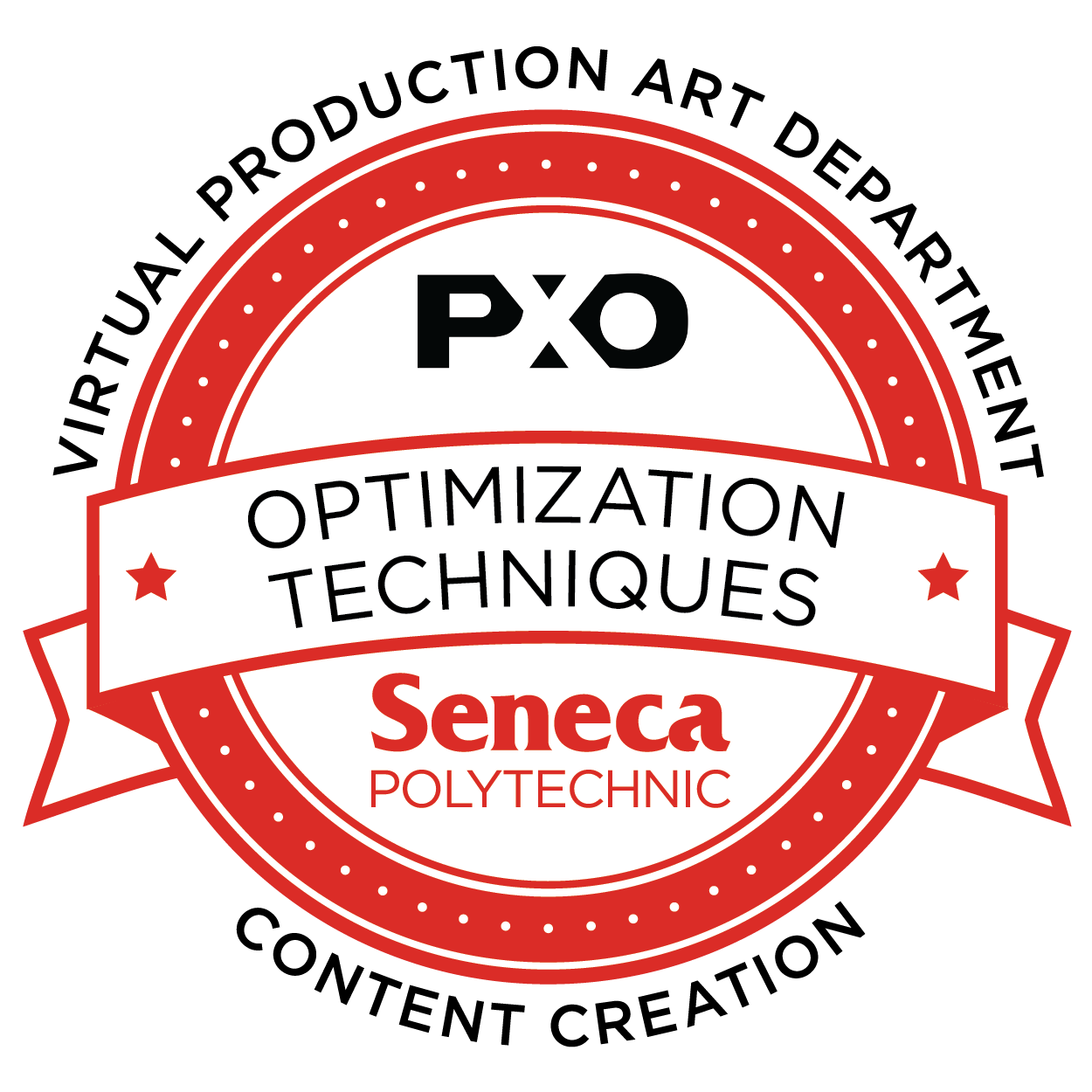
Virtual Production Art Department - Content Creation - Optimization Techniques
Issued by:
Issued on: 21.3.2024
Earner: Shane Campbell
Take the leap into the world of advanced digital visualization with our Visualization Foundations micro-credential. Unlock the power of Unreal Engine, gain a solid footing in the versatile Blueprint scripting, and refine your skills in optimizing and delivering high-quality assets. This course is a launchpad to creating visually stunning, efficient, and interactive digital experiences, preparing you for an exciting career in the virtual production field.
Criteria
The recipient of this micro-credential has demonstrated the following skills and competencies:
- Unreal Engine Mastery: In-depth understanding and proficiency in using Unreal Engine for creating and manipulating virtual environments.
- Blueprint Scripting: Familiarity with Unreal Engine's visual scripting system, Blueprints, enabling students to create interactive elements and events within their virtual scenes.
- Asset Optimization: Skills in optimizing 3D models, textures, and other assets for performance and quality within Unreal Engine, including the use of Level of Detail (LOD) techniques, texture compression, etc.
- Asset Delivery: Ability to package and deliver assets efficiently for use in Unreal Engine, maintaining the highest quality and compatibility.
- Workflow Efficiency: Understanding and implementing efficient workflows within Unreal Engine, from the initial design phase to final delivery.
- Problem-Solving Skills: Ability to troubleshoot and solve technical and creative challenges that arise during the asset creation and optimization process.
- Project Management: Knowledge of how to manage digital projects, including planning, time management, and collaboration.
- Quality Assurance: Proficiency in performing quality checks to ensure assets meet specified requirements and standards.
By providing:
A final summative consisting of a fully refined Virtual Production Environment, created and optimized in Unreal Engine. This task is designed to demonstrate your mastery of the skills and competencies gained throughout the course. Here are the specific requirements for this deliverable:
- Virtual Environment: The environment should be fully realized, detailed, and suitable for a virtual production. It should demonstrate your design skills as well as your proficiency with the Unreal Engine tools.
- Blueprint Integration: Your environment should include interactive elements, scripted using Blueprints. This could be dynamic lighting, triggered animations, interactive objects, or other elements that enhance the experience of the environment.
- Asset Optimization: All assets within the environment should be appropriately optimized for performance without sacrificing visual quality. This involves efficient use of textures, models, and other resources.
- Asset Delivery: Your final environment should be packaged and delivered in a format suitable for use in a professional virtual production pipeline.
- Documentation: Include a document that outlines your workflow, explains your optimization strategies, and provides a clear understanding of the Blueprint scripts implemented.
And by reflecting on the entire process by:
Writing a reflection paper that explores your creative and technical journey throughout this project. This will provide an opportunity for self-assessment and highlight areas of personal and professional growth. The reflection should include:
- Process Documentation: Discuss the evolution of your concept from its inception to realization. Include challenges you faced, how you overcame them, and alternate approaches you might consider for future projects.
- Technical Application: Reflect on the technical skills you applied in the execution of this project, such as use of Unreal Engine, application of virtual production techniques, 3D modeling, and more.
- Skill Improvement: Identify the skills and competencies that you feel have improved most significantly as a result of this course and explain why.
- Future Goals: Reflect on how this project and course have influenced your career goals or aspirations. Are there specific areas in visualization and virtual production you wish to delve deeper into?
- Peer and Instructor Feedback: Discuss the feedback you received during the course from peers and instructors. Reflect on how this feedback helped you refine your final project and how it will influence your future work.